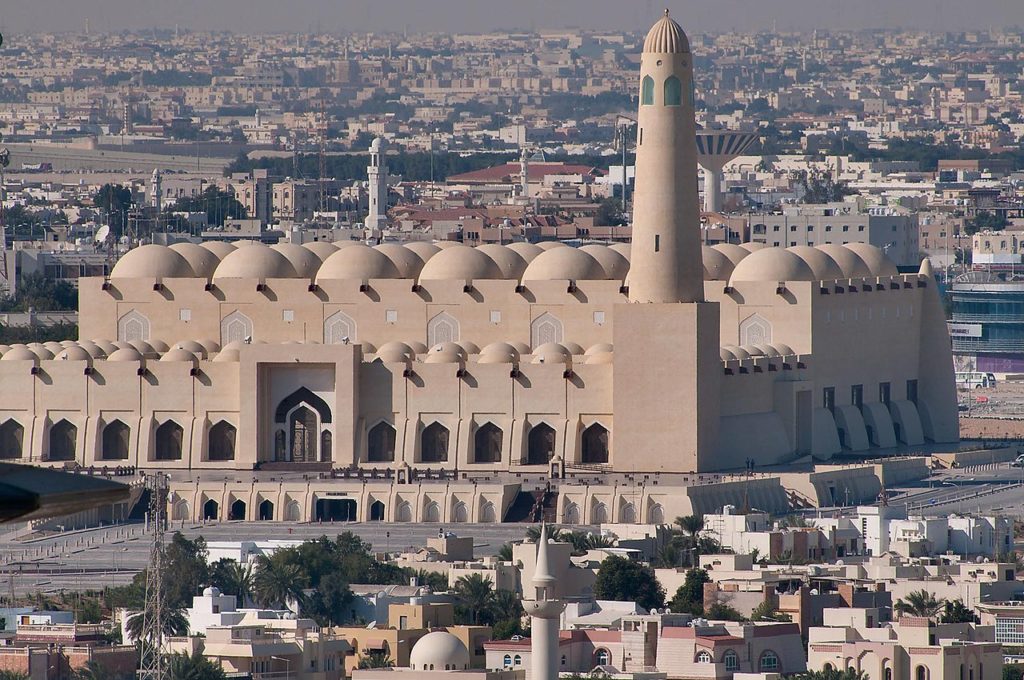Qatar sits on a peninsula in the Persian Gulf with Saudi Arabia to the west as their only neighboring country. Over the past 30 years, Qatar’s population has grown over four-and-half times to over 2.8 million, but only 10% are locals. The rest are expatriates from countries including India, Nepal, Bangladesh, Pakistan and Egypt. The majority of Qataris are Salafi Muslims and their biggest mosque, with a capacity of 30,000 congregants, is the Qatar State Grand Mosque.
Also known as Imam Muhammad ibn Abd al-Wahhab Mosque, the Qatar State Grand Mosque, the national mosque of Qatar, is a mile from the eastern coast in the city of Doha and is named after Muhammad ibn Abd al-Wahhab, founder of the Wahhabi movement (a fundamentalist movement of Sunni Islam). The mosque is 175,164 square meters, equivalent to a full 24 soccer fields. Inside, the mosque has a central chamber that can hold 11,000 men, a separate enclosure for women which accommodates 1,200 at a time, and a courtyard that holds 30,000 and is used for Friday prayer. The mosque also contains a library and spaces for lectures and classes.
The mosque has a traditional architectural design following the likes of Al Qebeb Mosque, which has 46 domes and though it was built in 1878, it stands without ever needing major repairs. The Grand Mosque, opened in 2011, is designed similarly with 90 domes. But as a modern building, it enjoys certain advances in technology like air conditioning, which is particularly necessary when the summer highs are 108 degrees Fahrenheit.
While the mosque is massive and already sees thousands of congregants through its doors, it may be more challenged by the 2022 World Cup and the 1.5 million tourists who are expected to go to Qatar, increasing the number of people in Qatar by 50%, so the country will have to “go big” to support its religious needs.

